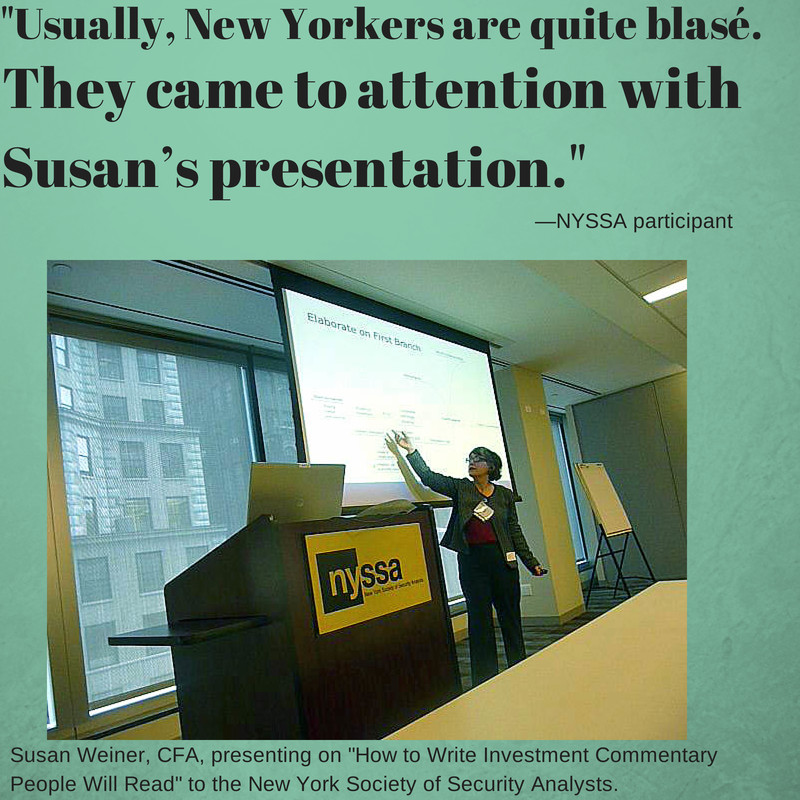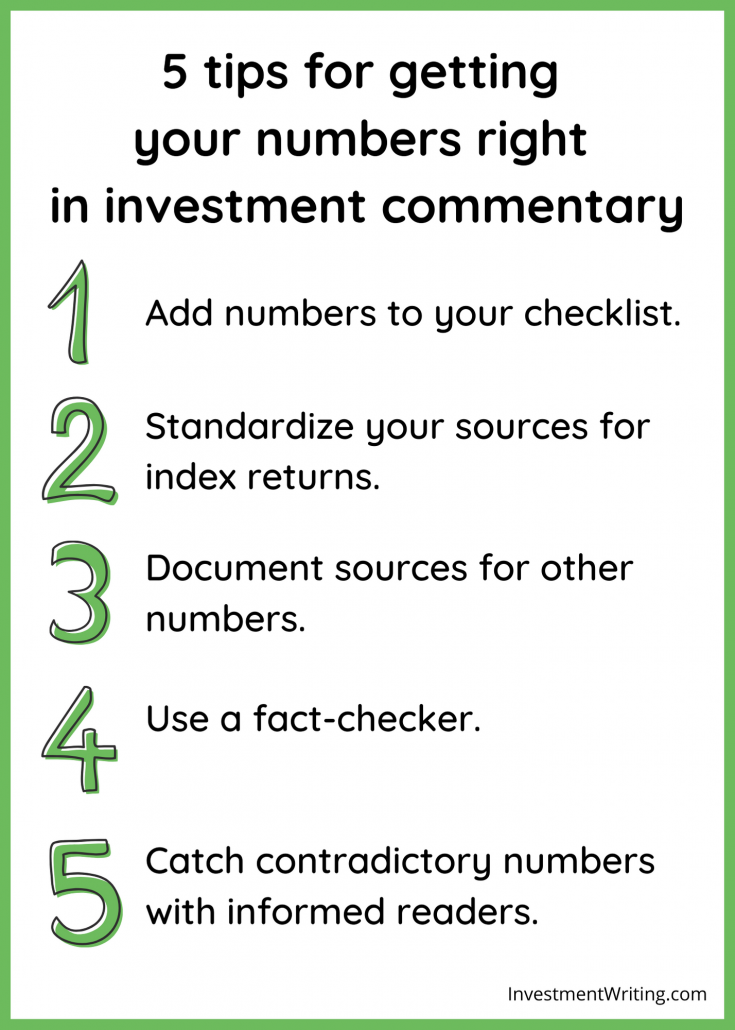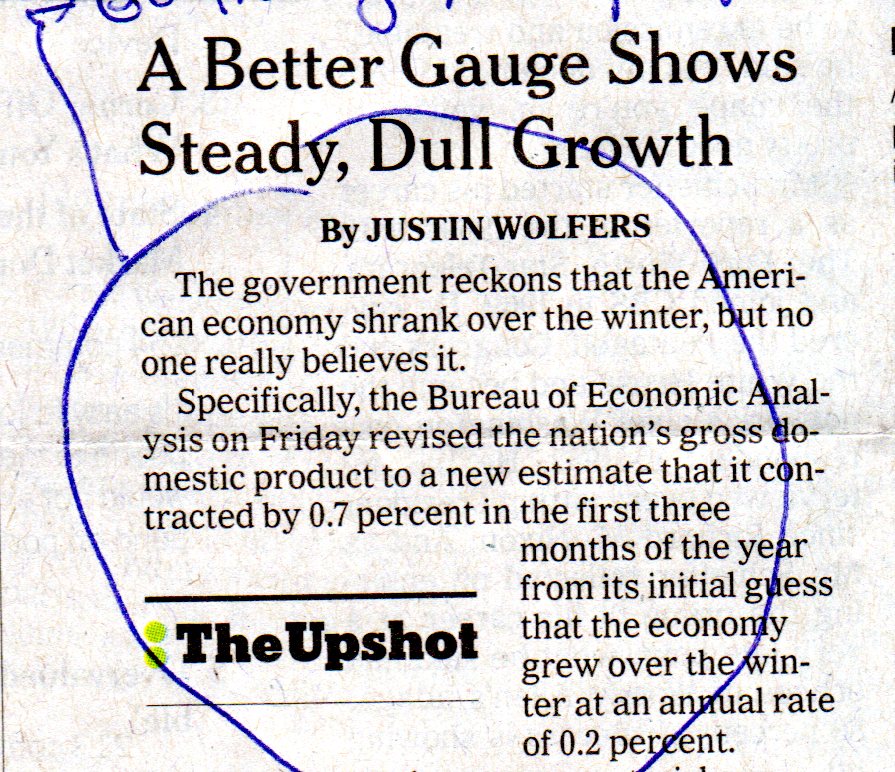The look of your financial reports makes a difference in the effectiveness of your communication. Fonts are part of your toolkit, as Professor Joyce Walsh explains in her guest post.
Fonts: By the numbers
By Professor Joyce Walsh, Boston University, College of Communication
 For financial professionals, numbers are the heart and soul of client communications. But working with them in documents, presentations and online can be painful. Anyone who’s wasted an hour trying to get the decimal points to line up in a vertical column knows what I’m talking about.
For financial professionals, numbers are the heart and soul of client communications. But working with them in documents, presentations and online can be painful. Anyone who’s wasted an hour trying to get the decimal points to line up in a vertical column knows what I’m talking about.
Fortunately, there are ready solutions to numerical challenges. And they come from an unlikely source: your choice of font. You’ve probably spent some time considering the right font for your written material. (If you haven’t, you can read this paper I wrote about typography for financial professionals.) But the right font can also make your numerical life much easier—and your client reports and marketing material more effective.
If you’re having trouble with numbers in your documents and presentations, here are solutions to five common problems:
Problem #1: My numbers don’t align properly in columns
Arranging a column of numbers is a standard feature of most financial and investment reports. Whether you’re showing the market caps of your top 10 holdings or presenting a balance sheet, your figures need to stack up in an orderly way, with all decimal points in vertical alignment. If yours don’t, it’s because your font choice uses proportional figures, where each character varies in width. When 8s take up more space than 1s, your column will never line up properly.
The solution: Use a font that offers tabular figures, where each number is the same width on the page, and 1s take up the same horizontal space as 8s. If your default font doesn’t have a tabular option, consider investing in one that does or use a different, complementary font when presenting a numbers in a column. Many font families, like Gotham, offer both proportional and tabular options.
Pro tip: Not sure whether font figures are proportional or tabular? Here’s a quick way to find out: Type a line of 1s, then type a line of 0s underneath it. If the two lines end at the same place, the numbers are tabular.
Problem #2: When I bold a number in a column, it bulges out
Using bold is a great way to call attention to a significant number. But even if you’re using tabular figures, doing so can still throw a column out of alignment. If this happens to you, it’s because your font doesn’t have weight-duplexing figures.
The solution: Invest in a font that offers weight-duplexing, a feature that allows bold numbers to stack without bulging out of columns. Whitney, a font by Hoefler & Co., is a good example.
Pro tip: Speaking of bulging—10- and 12-digit numbers are common in today’s financial world, and they can wreak havoc in the best of layouts. Consider using a font that offers condensed numbers, which are designed to fit big numbers into narrow spaces without losing their readability or visual appeal.
Problem #3: When I use numbers in the body of a report, the spacing doesn’t look right
Financial professionals often use figures within the body of a report. And, yes, sometimes they just look off—the spacing seems out of whack or the numbers appear to be larger or smaller than the surrounding words. That’s probably because you’re using tabular figures instead of proportional ones. Within any font family, proportional figures are more like letters in their overall shape and appearance, and they tend to be more evenly spaced.
The solution: Always use proportional figures in running text or the body of a document. Their variable width makes them easier to read and lends a more harmonious feel to the content.
Pro tip: Beware of fonts with old-style figures, where the numbers approximate the size and shape of lowercase letter forms. While they work in a sentence, they look tiny and out of place in ALL CAP headlines. You’re safer with a font that offers lining figures, which are all-cap height and work well everywhere. Fortunately, most common system fonts default to lining figures.
Problem #4: I need more currency symbols for my reports
As the global economy expands to include emerging and frontier markets, forward-looking financial professionals need a font that goes beyond the dollar, pound, euro and yen to include symbols for currencies such as rupees, pesos and the new shekel. While it is possible to enter special numbers and codes to produce them, the process is slow and labor-intensive. If you use international currency symbols frequently, it’s just not practical.
The solution: Invest in a font family with extended currency symbols. Gotham, Mercury and Whitney are good examples of fonts with a wide range of monetary symbols.
Pro tip: If you want to make your articles, reports and presentations more useful and attractive for your audience, consider purchasing a font family that offers an extended character set. These typically include vertical and diagonal fractions, ordinals, and advanced mathematical and statistical symbols. Some even come with indices—circles with numbers in them—a very handy item if you want to compare plot points on a graph or add a distinctive touch to financial footnotes and disclosure references.
Problem #5: I need charts in my WordPress blog
The solution: You can apply the principles discussed above and post your charts as graphic files, such as JPGs or PNGs.
Pro tip: If you want to create charts and graphs while in WordPress, you will need a plugin. The WordPress Chart plugin is free and customizable, but is not user-friendly. Visualizer is also a free WordPress Plugin but is much easier to use. Just save your Excel XLS file as a CSV file. Then create a chart in the WordPress editor by selecting Add Media > Visualizations. To display the chart, simply add its shortcode to your post.
About Professor Joyce Walsh
Professor Walsh’s work has been featured in publications, exhibitions and corporate art collections around the world. Her book, Graphic Design Essentials: Skills, Software and Creative Strategies, was the first book to combine design fundamentals with creative software skills
Business data analyzing image courtesy of alexisdc/FreeDigitalPhotos.net
t



 For financial professionals, numbers are the heart and soul of client communications. But working with them in documents, presentations and online can be painful. Anyone who’s wasted an hour trying to get the decimal points to line up in a vertical column knows what I’m talking about.
For financial professionals, numbers are the heart and soul of client communications. But working with them in documents, presentations and online can be painful. Anyone who’s wasted an hour trying to get the decimal points to line up in a vertical column knows what I’m talking about.

